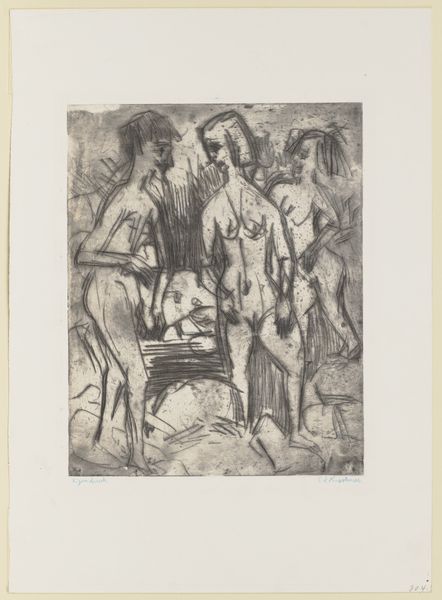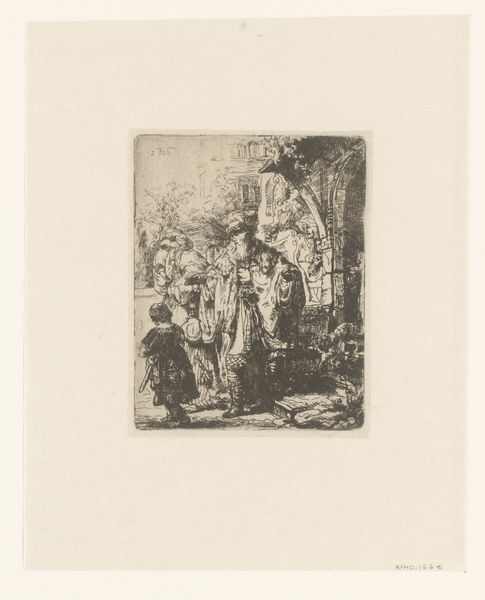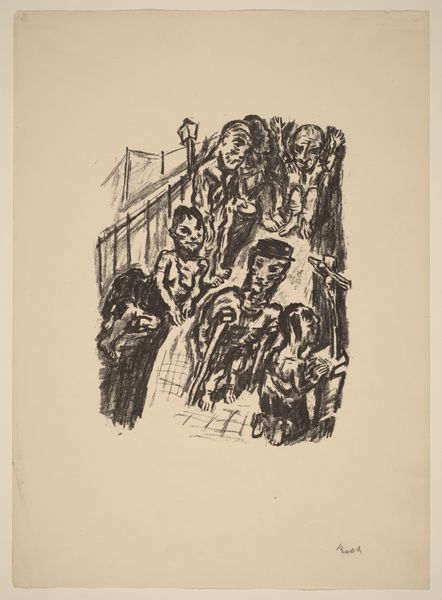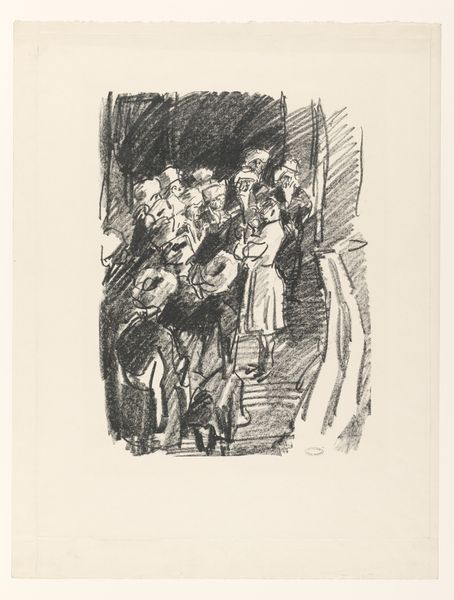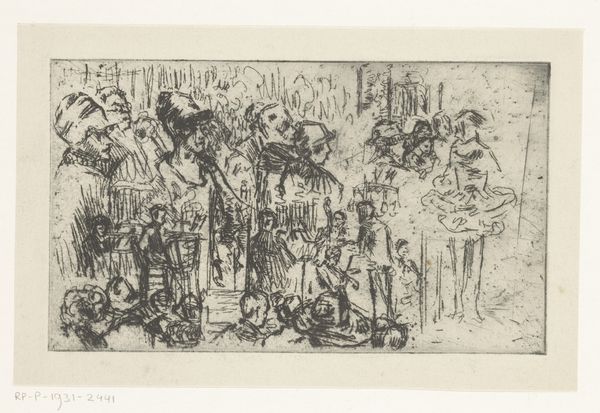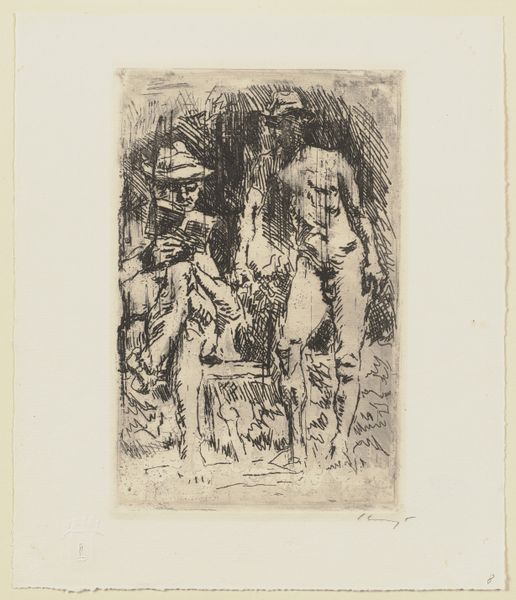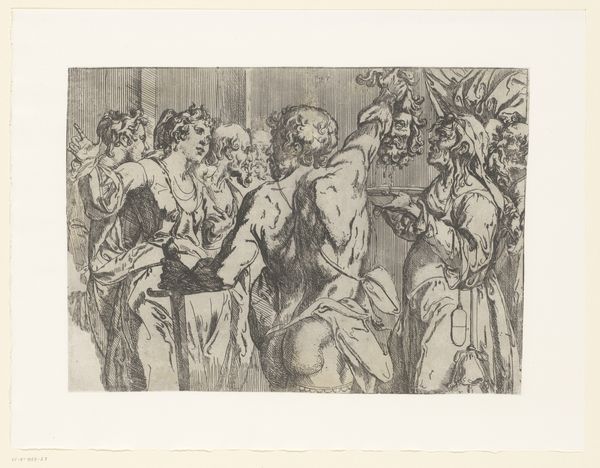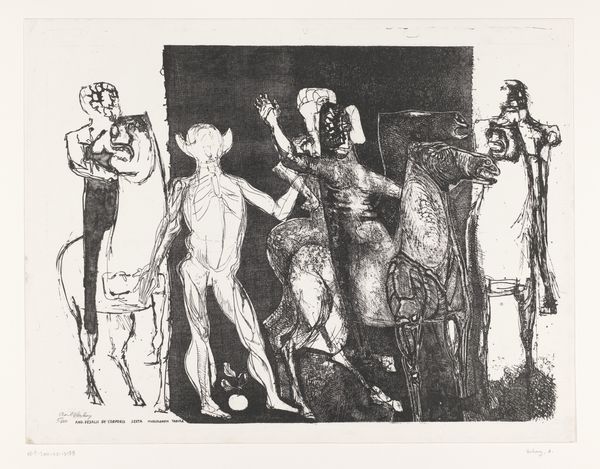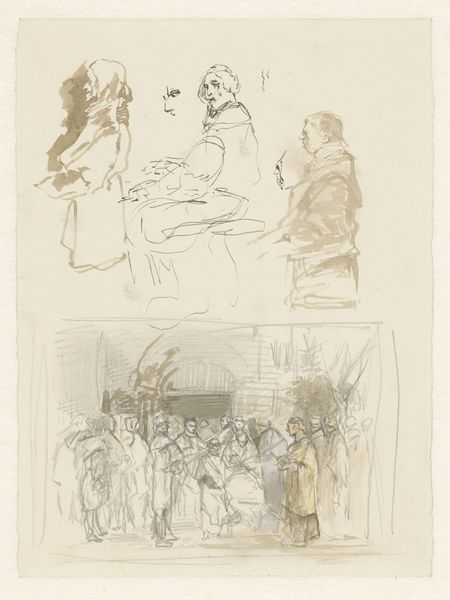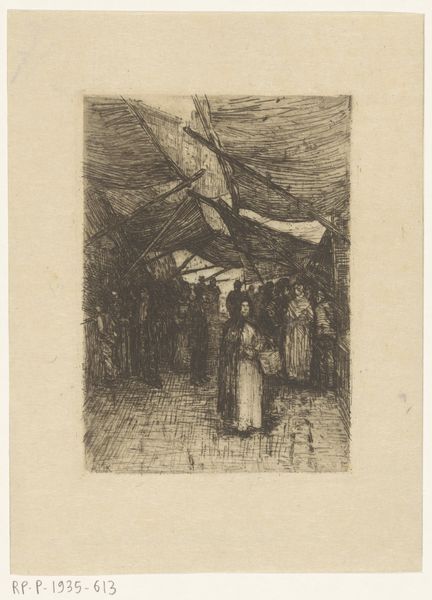
drawing, monotype, print, paper, ink
#
drawing
#
monotype
#
narrative-art
#
ink paper printed
# print
#
pencil sketch
#
old engraving style
#
figuration
#
paper
#
ink
#
pen-ink sketch
Dimensions: height 462 mm, width 358 mm
Copyright: Rijks Museum: Open Domain
Curator: Here we have "Le Cinéma," a work in ink and monotype on paper by Jean-Louis Boussingault. It was created sometime between 1893 and 1943. Editor: My initial reaction is of a shadowy theater experience, rendered in stark monochrome. The deep blacks are really impactful, almost obscuring the figures in the foreground. Curator: The figures and overall composition speak volumes about the performative spaces during the interwar period. We need to examine not just *what* is being shown, but *who* has access to these narratives and who is conspicuously absent from them. What societal norms are being performed, both on and off screen? Editor: The artist has created a layered visual world. Take, for instance, the distinct registers; a darker lower section of audience members, above which are ghostly performers in costume or perhaps a film being screened, and then a depiction of acrobats performing on stage. What can you tell me about the choice of symbols? Curator: Those sharp contrasts you are seeing hint at larger themes of exclusion and privilege within visual culture. Editor: Absolutely. What seems key to me is the repetition of bodies engaged in dynamic postures across all levels. We can see continuity in art’s subject through symbols of the body in motion. In classical symbolism, movement implies purpose and vitality. Here, however, the shadowy representation casts these connotations into something that looks altogether different. Curator: This image speaks volumes, I think, about how visual entertainment reflects and reinforces social hierarchies. Are these audiences truly liberated by the narratives presented to them, or are they passive recipients of ideological programming? Editor: Exactly! By diving deeper into the symbolism we start to see art's engagement in broader patterns, and through these the psychology of society is slowly revealed. This glimpse of a long-gone entertainment venue is filled with potent memory. Curator: I agree; approaching art in this manner, understanding how it engages with power structures, gives us an opportunity to unpack the visual messaging that has shaped perceptions of the world for so long. Editor: Absolutely; the enduring power of symbols connects us to the cultural landscape, prompting reflection on the ways it changes over time, but also what continues to influence and sway us.
Comments
No comments
Be the first to comment and join the conversation on the ultimate creative platform.

